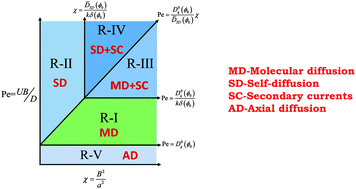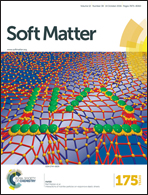Dispersion of a passive tracer in the pressure-driven flow of a non-colloidal suspension
Abstract
This paper numerically quantifies the dispersion of a solute, and in particular, the Taylor dispersion, in the pressure-driven flow of a non-colloidal suspension at moderately high volume fractions (0.2 to 0.5) through conduits of different cross-sectional shapes. An obvious intuition is that the Taylor dispersivity should increase owing to a decrease in the molecular diffusivity of the solute in the presence of particles impermeable to the solute; however, this is true only at low volume fractions. At higher volume fractions, three other physical effects become important, all of which lead to a reduction in Taylor dispersivity relative to a Newtonian fluid. The first is the blunting of the velocity profile resulting from particle migration into the low shear-stress regions, an effect that has been alluded to in the past by Roht et al. [J. Contam. Hydrol., 2013, 14, 10] and is important only at low Péclet numbers (Pe). At higher Pe, the two stronger effects are shear-induced solute self-diffusion, which arises due to shear-induced particle–particle interactions, and secondary convection, which is observed in non-axisymmetric cross-sections as a result of the second normal stress differences exhibited by concentrated suspensions. For a given volume fraction and cross-sectional geometry, a regime map, developed using a scaling analysis, delineates five regimes of dispersion involving one or a combination of the mass transfer mechanisms mentioned above. Our analysis also suggests that the cross-sectional shape can be exploited to enhance or suppress solute dispersion by modifying the secondary current strength and profile.



 Please wait while we load your content...
Please wait while we load your content...